Measuring Width
Traditional shoe shop widths
In the UK, we have a complicated system of C-I width fittings and if you have visited a shoe shop you may well have been given a letter to denote which category you fall into. Usually E, F, G or H with E being narrow, F and G medium and H wide.
However, these are not really width measurements at all but volume measurements. This is because the fitter uses a tape to measure around the whole foot. This means a narrow, deep foot would measure the same as a wide, shallow foot. In practice these two different feet would need a very different style of shoe and yet could be given the same width designation. We therefore don’t find that these designations will help you find the best shoe for your child.
Measuring Shoe Width
Some manufacturers provide width measurements for the shoes and whilst this can be helpful to compare with the width of your foot it doesn't give the whole picture. This is because there are a number of ways and points at which to measure the width of a shoe. Some manufacturers supply a direct measurement across the sole in cms, others supply a circumference around the inside of the shoe to take into account the shape of the upper (which can sometimes be wider than the sole itself). What none of these measurements take into account is that feet will vary as to where they are at their widest. For many children the widest point is across the toes but many width measurements are taken across the ball of the foot.
The shape of the toe box is also important as some feet, and shoes, are squarer in shape while others slope more from the big toe down to the little toe. This will affect how well the width works for your foot as well. All in all it is easy to see what a minefield width measurements are!
Happy Little Soles Width System
At Happy Little Soles we try and keep it simple and use a system based on Narrow, Medium and Wide fittings. Each shoe is categorized in this way with detailed fitting notes to tell you about the shape of the toe box and whether the shoe is also suitable for higher insteps, shallower feet or narrower ankles.
We recommend that you read the fitting notes connected with your selected shoes to check that they would be suitable.Judging the width of your child’s foot
So how do you judge the width of your children’s’ feet? In truth this is something that is very difficult to measure accurately at home! We are working hard to find a way of measuring width but for now our system relies on you as the child’s primary carer to know which bracket their feet fall into, just as we know if they're short, tall or average in height.
So how do you tell? Generally speaking if your child has very narrow or very wide feet you would probably know. If you aren't sure of the width of your child’s feet then they are probably medium width and we would suggest you start there. Alternatively you can email us some photographs of their feet and we would be very happy to take a look and recommend where to start.
Width and Barefoot shoes
In a barefoot shoe you are not looking to 'hug' the width of the foot as in conventional shoe fitting but allow sufficient room for little toes to spread out and for the natural expansion and growth of hot, active little feet. Children’s feet can expand by up to 20% when hot and active and barefoot shoes allow for this.
However, this often means that shoes can look a little wider than traditional shoe fitting would allow. This is absolutely fine and normal, you need space across the width just as you need space in the length to allow feet to expand and grow. Our philosophy is to allow as much space across the toes as you possibly can without causing the foot to slip around in the shoe.
If the foot is visibly slipping around within the shoe or the child is not walking naturally, the shoe is likely too wide and shouldn’t be worn.
Foot Gallery
In order to help you judge we are developing a gallery of foot pictures so you can compare your child’s foot to the ones shown below. Have a look and see what you think!
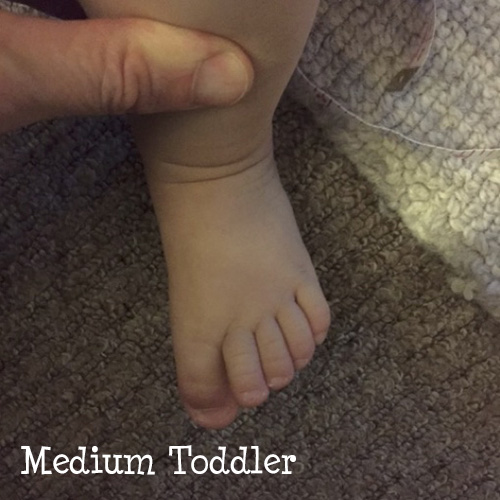
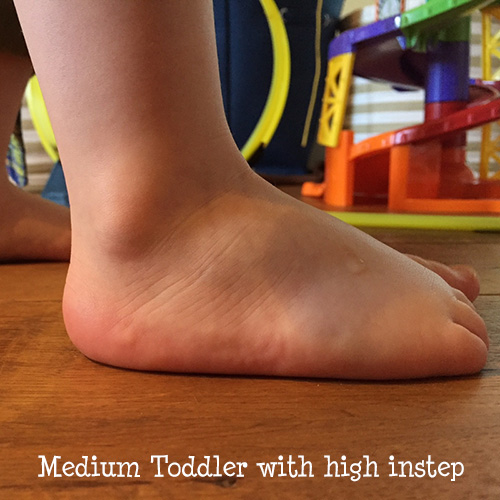
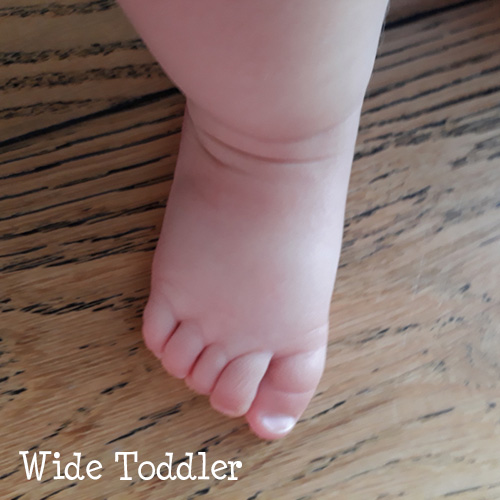
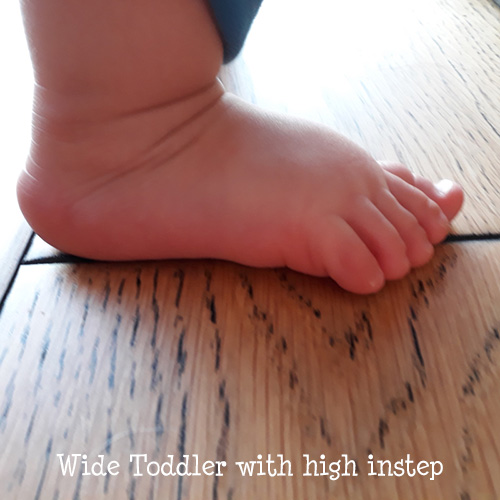
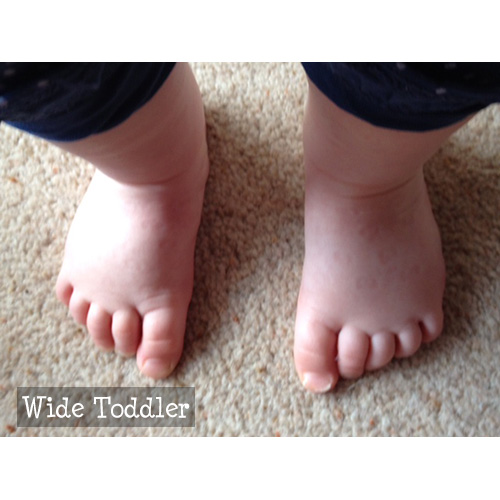
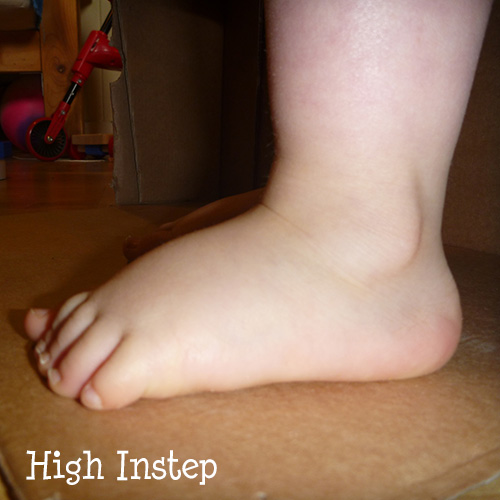
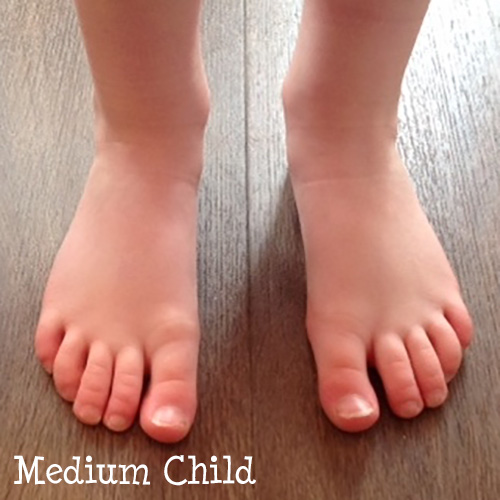
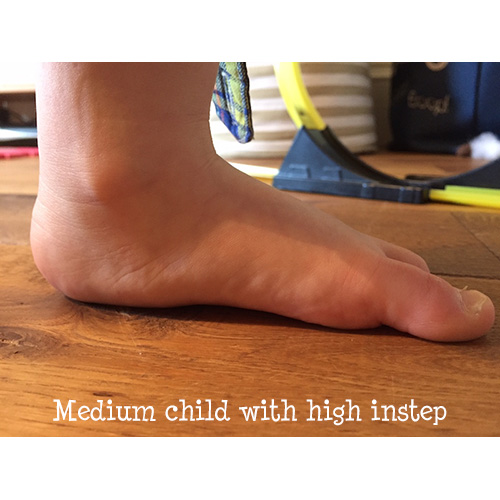
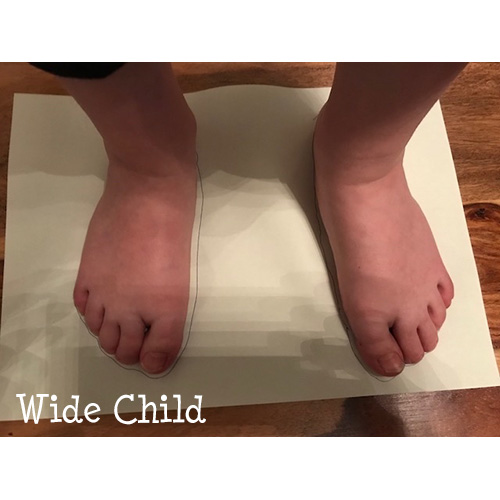
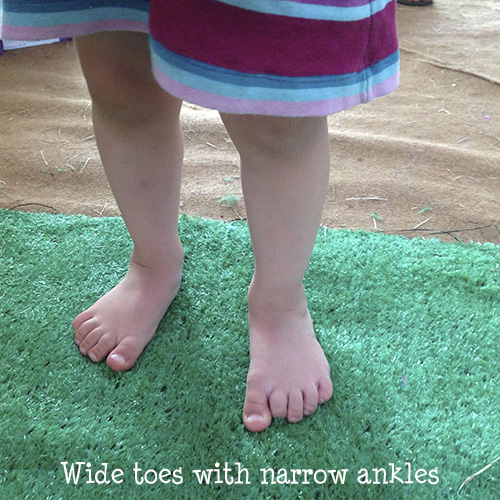
 Free UK Returns
Free UK Returns